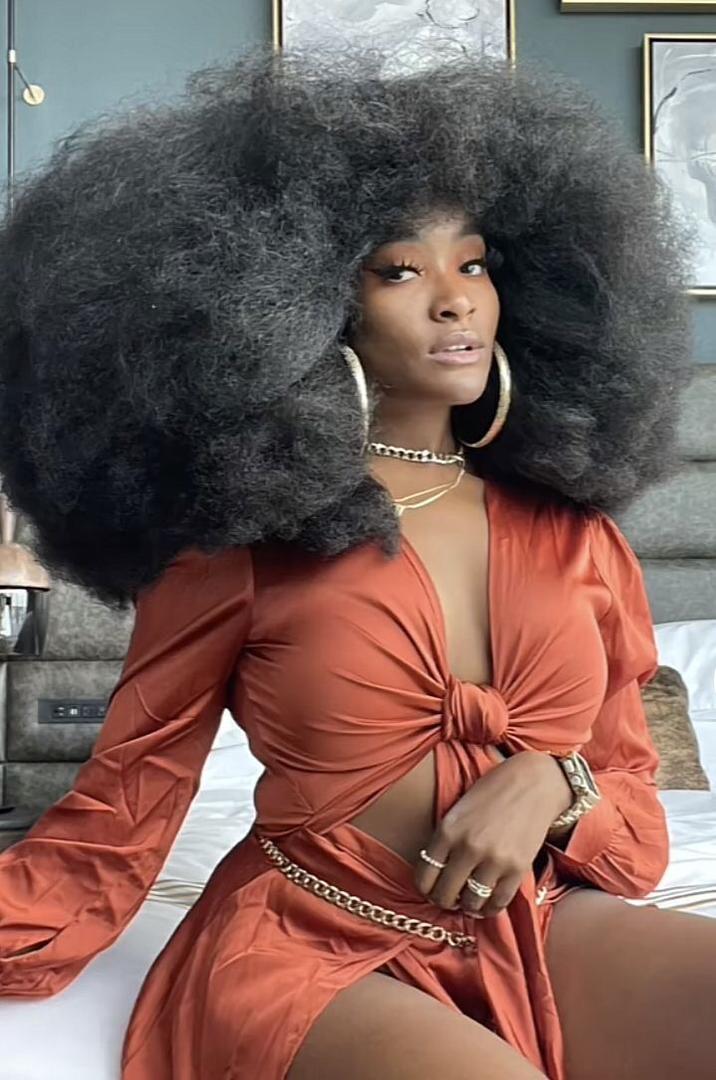
Afro Hair
History:
The Afro hairstyle, also known as the "natural," has a significant cultural history rooted in the African American experience. It emerged as a symbol of pride, resistance, and cultural identity during the Civil Rights Movement of the 1960s and 1970s, when African Americans sought to embrace their natural hair texture and reject Eurocentric beauty standards.Cultural Significance:
The Afro holds deep cultural significance within the African American community and beyond. It became a powerful symbol of Black pride and empowerment, challenging societal norms and stereotypes associated with straightened or processed hair. The Afro represented a celebration of natural beauty and a rejection of conformity.Traditional Techniques:
The Afro hairstyle is characterized by its voluminous, rounded shape, which is achieved by allowing natural hair to grow out and form a dense, rounded silhouette. Traditional techniques for maintaining the Afro include regular washing, moisturizing, and fluffing to enhance volume and shape.Regional Variations:
While the Afro hairstyle originated within the African American community, it has since become a global symbol of Black pride and resistance. Variations of the Afro can be found in many cultures worldwide, with individuals of African descent embracing their natural hair texture and celebrating their heritage.Modern Adaptations:
In contemporary times, the Afro hairstyle remains a powerful symbol of self-expression and cultural pride. It has transcended its origins as a political statement to become a mainstream fashion trend embraced by people of all backgrounds. Modern adaptations of the Afro may include styling variations such as tapered cuts, twist-outs, and frohawks.Social Context:
The Afro hairstyle was not only a fashion statement but also a form of social activism during the Civil Rights Movement. It represented a rejection of societal norms and a demand for equality and respect. Today, the Afro continues to hold significance as a symbol of resilience, strength, and Black identity.Rituals and Ceremonies:
While the Afro hairstyle may not be directly associated with traditional rituals or ceremonies, it is often worn as a symbol of celebration and pride during cultural events, festivals, and gatherings within the African American community.Meaningful Accessories:
Accessories such as headbands, scarves, and hair picks may be used to adorn and style the Afro, adding personal flair and cultural significance to the hairstyle. These accessories serve as expressions of individuality and creativity within the Afro-centric community.Maintenance and Care:
Proper maintenance and care are essential for preserving the health and appearance of the Afro hairstyle. This may involve regular washing, conditioning, and detangling to keep the hair hydrated and manageable. Protective styling techniques such as braid-outs or twist-outs can also help maintain the shape and volume of the Afro.Contemporary Impact:
The Afro hairstyle continues to have a significant impact on contemporary fashion, beauty, and popular culture. It is celebrated as a symbol of diversity, inclusivity, and self-acceptance, inspiring people of all backgrounds to embrace their natural hair texture and celebrate their unique beauty.

